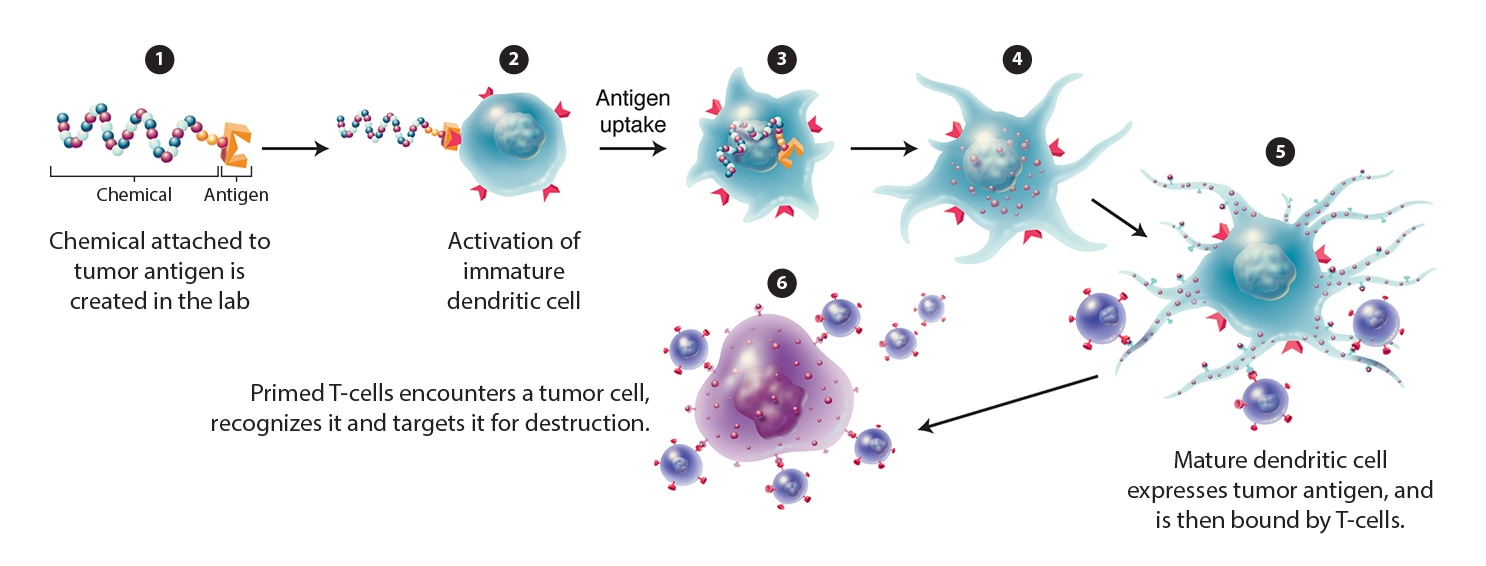Hi AYCIAD friends!
Thanks once again for your understanding with this long and unexpected absence. Happy new year! I hope you are having a good start to the new year. As for me, what better way to launch into our timely topic series on immunotherapy, than with a trip down memory lane?
The image you see above is something I did for Scientific American way back in 2004, when cancer vaccines were something so unprecedented and seemingly decades away. Well, here we are, 17 years later, talking about this very same drug depicted above, for use against prostate cancer: Provenge® by Dendreon, the only FDA-approved cancer vaccine for prostate cancer.
This prostate vaccine is really a stimulant for the immune system to mount a better defense against cancer cells. Thus, it's not preventing disease, rather, it is trying to treat existing disease.
A cancer vaccine is made by first taking either the body’s immune cells that have been exposed to the cancer, or pieces of the immune cell, or even pieces of the cancer cell out of the body, and then exposing to chemicals (1) to create the vaccine. In this image, a tumor antigen (orange/yellow piece attached at the right end of the chain of balls) certain chemicals created in the lab (1) can turn those cells into a special type of cell called a dendritic cell (2 through 4). Fully mature dendritic cells are useful because they migrate to the location in the body (e.g., lymph nodes) where T cells are ready to identify what they are presenting (5). This is therefore a way to prime the immune system to recognize tumor cells (6) in a more targeted way.
In the next post, we will explore the the HPV vaccine, a more “traditional” style of vaccine.
Thanks once again for your understanding with this long and unexpected absence. Happy new year! I hope you are having a good start to the new year. As for me, what better way to launch into our timely topic series on immunotherapy, than with a trip down memory lane?
The image you see above is something I did for Scientific American way back in 2004, when cancer vaccines were something so unprecedented and seemingly decades away. Well, here we are, 17 years later, talking about this very same drug depicted above, for use against prostate cancer: Provenge® by Dendreon, the only FDA-approved cancer vaccine for prostate cancer.
This prostate vaccine is really a stimulant for the immune system to mount a better defense against cancer cells. Thus, it's not preventing disease, rather, it is trying to treat existing disease.
A cancer vaccine is made by first taking either the body’s immune cells that have been exposed to the cancer, or pieces of the immune cell, or even pieces of the cancer cell out of the body, and then exposing to chemicals (1) to create the vaccine. In this image, a tumor antigen (orange/yellow piece attached at the right end of the chain of balls) certain chemicals created in the lab (1) can turn those cells into a special type of cell called a dendritic cell (2 through 4). Fully mature dendritic cells are useful because they migrate to the location in the body (e.g., lymph nodes) where T cells are ready to identify what they are presenting (5). This is therefore a way to prime the immune system to recognize tumor cells (6) in a more targeted way.
In the next post, we will explore the the HPV vaccine, a more “traditional” style of vaccine.


 RSS Feed
RSS Feed
